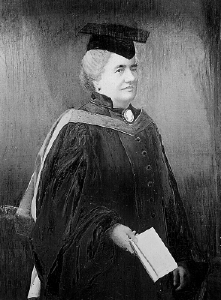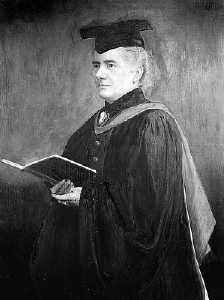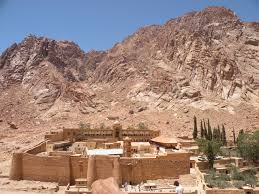Agnes But know this first of all, that no prophecy of Scripture is a matter of one’s own interpretation, for no prophecy was ever made by an act of human will, but men moved by the Holy Spirit spoke from God. (2 Peter 1:20,21)
Christians for many centuries have believed that the Bible is the very word of God. It was not questioned by most of the faithful until the nineteenth century. Then the Bible came under attack by liberal scholars influenced by the so-called “higher criticism” that originated in Germany. Skeptics relegated the stories in the Old and New Testaments to mythology. In an age of escalating scientific discoveries, many no longer believed in miracles such as a six-day creation, the Flood, or the parting of the Red Sea.
Not only did the facts in the Bible come under criticism, but scholars doubted the integrity of the text itself. They assumed that there could not be any such thing as prophecy, therefore the stories must have been written years after the events were supposed to have happened according to biblical authors. Liberals also applied the principle of evolution to the development of Christianity. Unbelievers such as Thomas Paine declared that the Gospels could not have been written until at least three or four hundred years after Christ.
Faithful Christians never doubted that the Word of God was given by the Holy Spirit and that the Scriptures had been protected by God down through the centuries. They longed to counter the claims of the liberals but there were very few ancient copies of the Scriptures to authenticate their claim that the Bible indeed was written by Paul and other men of God.
But God has continually protected His Word and in His providence directed the finding of evidence of its veracity. Twin sisters – Margaret Gibson and Agnes Lewis – came across one of the earliest known copies of the four Gospels in a secluded monastery in the Sinai Peninsula. This palimpsest dated to the fourth century but it was a translation of a copy that dated to the late second century. As news of this discovery spread Christians around the world rejoiced. The date of the writing of the Scriptures now came very near to the beginning of Christianity.
How did these Scottish twins, with no formal university training become the ones who would make the Biblical find of the century?

Agnes and Margaret Smith were born on January 11, 1843 to John and Margaret Smith in Irvine, Scotland. Mrs. Smith would die only two weeks later. John vowed never to marry again and to bring up the twins by himself. In his sorrow he never mentioned his wife Margaret afterwards, but despite his aloofness on the subject of his wife, he was a loving and generous father.

John Smith educated his daughters as if they were boys. He taught them logic and reasoning. Typical of Scottish Presbyterianism, their school educated boys and girls together. There was a high priority placed on being able to read the Bible for men and women alike. Christians were expected to attend church twice on Sunday. Agnes and Margaret were blessed in that their minister was one of the finest preachers in Scotland and his sermons were rich in illustrations from the Bible, especially the Old Testament.
The twins’ father told them that for each foreign language they would learn he would reward them with a visit to that country. These bright girls took advantage of their father’s offer and mastered French, German, Spanish and Italian while young. The sisters had always been deeply interested in studying the Bible and between them learned several Biblical languages – Hebrew and Greek- and later modern Greek, Arabic, and Syriac. This love for God’s Word and for the history of God’s people would later be part of the motivation for the sisters to travel to Sinai in search of lost manuscripts.
John Smith died when the sisters were only 23 years old. He left them with a huge inheritance of a quarter of a million pounds. Most unmarried wealthy women would have probably headed for the Riviera or Paris. But Agnes and Margaret decided to head to Egypt instead.
Margaret and Agnes mourned for their father but not for too long. After all, he was in a better place and lengthy mourning periods only showed lack of faith in the life to come. Though they shocked some people they decided to assuage their grief by doing something that they knew he would applaud. They would travel. Hadn’t he brought them up not to worry about what other people think? Didn’t they know nine other languages and so could travel with ease where most people would have difficulty?
Being devout Presbyterians with a love for God’s Word it was natural for them to think of a religious tour rather than a frivolous one. The sisters had no other relations to tell them what to do and so these inseparable twins set out on an adventure. They hired a lady companion, Grace Blyth, and set out for the Nile.
Their first adventure was fraught with difficulties including a cheating dragoman. The sisters received rebukes saying that they should have traveled under a male escort. But dauntless Agnes felt otherwise. Their mistake, she said, was in not knowing the language of the country. They would continue to travel – but learn the language first!
Upon returning from their year long adventure, Agnes and Margaret settled in London. Some years later both would marry and both would be widowed after only three years of wedded happiness. Margaret married James Gibson a preacher of some renown. He passed away in 1886 after a brief illness. During their marriage James Gibson prevented the sisters from traveling to Sinai again. Though they dearly wanted to, James thought it was too dangerous. They respected his guidance.
Agnes married Samuel Lewis, a Fellow and antiquarian librarian at Cambridge. This marriage allowed Agnes into the Cambridge society and she met many scholars who would influence her later. Samuel also passed away somewhat unexpectedly in 1891. The widows were in deep mourning but both had the assurance that they would see their beloved husbands in Heaven.
Margaret and Agnes were now free to travel again. They could at last return to Sinai. Dangerous as it might be the twins longed to travel on the same route as the Israelites. They wanted to visit the spot where Moses saw the burning bush and then returned later to receive the Ten Commandments. Eventually they wanted to trod where Joseph and Mary and the child Jesus trod on the way to Egypt.
 A friend and fellow biblical scholar, Rendel Harris, had told Agnes about a manuscript that he had found at St. Catherine’s Monastery at the foot of Mount Sinai several years earlier. This was a fabulous find. It was a record of a developed Christian doctrine dating to the second century. This was the kind of proof that Christian scholars were looking for to refute the skeptics who said that Christian doctrine was not developed for hundreds of years.
A friend and fellow biblical scholar, Rendel Harris, had told Agnes about a manuscript that he had found at St. Catherine’s Monastery at the foot of Mount Sinai several years earlier. This was a fabulous find. It was a record of a developed Christian doctrine dating to the second century. This was the kind of proof that Christian scholars were looking for to refute the skeptics who said that Christian doctrine was not developed for hundreds of years.
But the most exciting thing, he told Agnes, was that there was a dark closet in the Monastery where there were many other documents that he did not get to look at. These documents were in Syriac, a form of the Aramaic that was spoken in the first century. This was the language spoken by Jesus. Agnes studied Syriac in anticipation of finding these documents. She wanted to be able to identify them accurately.
Now prepared to meet the monks in the Sinai monastery with their command of modern Greek and their ability to read Syriac, the sisters set out on their quest for the most important Bible find of the century.
Continued Next Week…….

